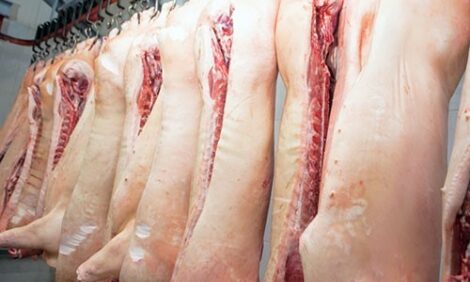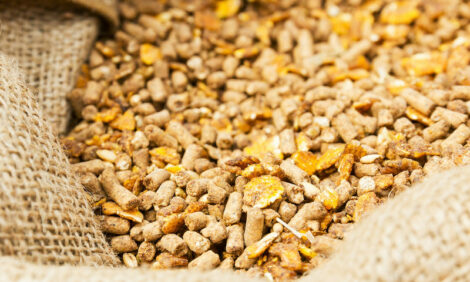



Comprehensive, data-driven approach to lower wean-finish mortality
Identifying the source of wean-to-finish mortality can be a challenge, since factors affecting that stage of production may have originated earlier - on the sow farm, in the farrowing barn or at weaning.Production records, while valuable in many respects, don’t help producers and veterinarians get to the root of a problem that may be contributing to wean-to-finish mortality. The records aren’t aggregated in a way that easily provides information for the production system, said Edison Magalhaes, DVM, a research student at Iowa State University. That dilemma may change in the future.
A large project involving the Foundation for Food and Agriculture Research, National Pork Board, Iowa State University, Kansas State University and Purdue University is designed to help producers combine information from different production segments and multiple sources into a more comprehensive, cloud-based system with the endgoal of making better long-term decisions.
The main objective of the project is to help a production system know its mortality level, know what’s associated with it and implement strategies to lower mortality rates in a process that’s more fluid and efficient, he said.
“The first step is to develop a statistical model,” Magalhaes told Pig Health Today. “The model will capture and merge the data from different sources of information (production records, diagnostic information, health status, financial records, etc.) into a final cohort report for the purpose of developing data-driven predictors of wean-to-finish mortality,” he explained. For example, if a producer measures daily water consumption on the wean-to-finish farm, that information can be included.
“All of the information can be automatically aggregated with this software,” he said. “The objective of the cohort report is to have a statistical analysis so intervention programs for specific variables related to wean-to-finish mortality can be measured. Then, we can do a multi-variable analysis to predict mortality downstream.”
Many moving parts
The multi-faceted, 5-year project is a massive undertaking and involves many researchers, Magalhaes said.
The program began in April 2017 and involved more than 700 close-outs from Iowa Select Farms, headquartered in Iowa Falls, Iowa. Magalhaes said with the data captured from the 2017 and 2018 closeouts, the research team was able to create a final cohort report and measure specific parameters associated with wean-to-finish mortality. For example, the team measured mortality for wean-to-finish groups from sow farms before and after those farms incorporated air filtration.
“Before they began using air filtration, the average mortality [of the wean-to-finish groups] was 11 percent and after air filtration it was 8 percent,” Magalhaes said.
With this tool, the research team can measure specific parameters. For example, after an analysis this year from January to June of Escherichia coli (E. coli), the farm implemented a few variables and researchers designed the model. They recorded diagnostic information at the growing phase and tracked differences between groups that had E. coli and those that didn’t. The cohort report helped farm managers know which interventions were working.
In the future, researchers hope to use reports from veterinary diagnostic laboratories to reclassify groups of pigs. For example, a grow-finish group may be identified through diagnostics as having a problem with swine influenza. The model could potentially illustrate that the farm is receiving influenza-positive pigs from a sow farm.
“The information the production system wants to record is included in a cohort report as a tool,” Magalhaes said.
The team will have the capability to work directly with a recordkeeping company’s database, so producers can ask for a report that can then be automatically generated, he added.
“We need to create a pattern of spreadsheets, data sets and sources of information,” Magalhaes said.
If a producer has a higher wean-to-finish mortality rate than desired, he/she can load production information into the model and potentially be able to identify problems in other production phases and take steps to correct those problems.
“That’s the final goal,” Magalhaes said. “Right now, producers have a lot of data coming from different sources. This tool will match and merge the information automatically, provide a statistical analysis and measure the effect of identified parameters.”
Estimated timeline
The cloud-based model is done but not yet linked with Iowa State’s website. The research team has talked with the IT team at the university to discuss the variables between different software programs and how an online system would work, Magalhaes said. Researchers hope to provide an online platform so producers can go to Iowa State’s website and directly upload their reports.
In the meantime, the research team is asking for sow performance, nursery, wean-to-finish and finisher closeout reports. This production data will be linked with the herd’s information from the veterinary diagnostic lab and other health status and financial reports. If a producer wants to compare differences between feeder types, drinker types or filtered versus non-filtered barns, for example, Magalhaes said that would be possible if the data is captured.
Any producer interested in participating in this initiative should contact Magalhaes; Daniel Linhares, DVM; Jason Ross, PhD; or Chris Rademacher, DVM, at Iowa State.








